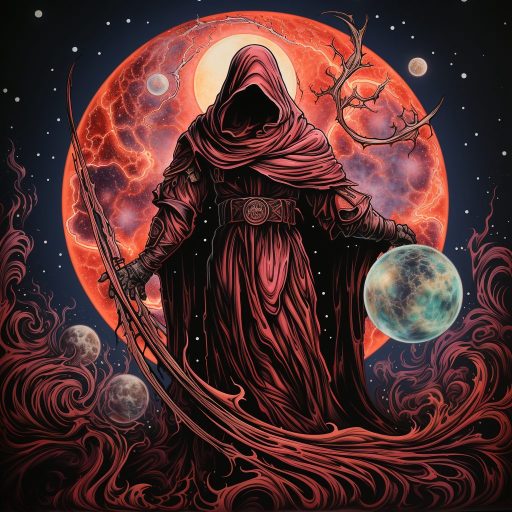
Parleying with Monsters in 5E D&D Reveals the Power of Social Interaction
Tasha’s Cauldron of Everything is officially released! Like countless others around the world I poured through the new fifth edition Dungeons & Dragons book oohing and ahhing over the fun new character options, my imagination awhirl with possibilities. (We’re already talking about twists and turns for our characters when we revisit Those Bastards!) In the coming weeks we’ll surely create plenty of videos and posts right here exploring what’s inside but there’s one section of the book I absolutely love above all others and I couldn’t wait to sink my teeth into Parleying with Monsters. So let’s get into it.
Researching monsters and their desires in Tasha’s Cauldron of Everything
The wonderful Parleying with Monsters section of chapter 4 in Tasha’s Cauldron of Everything arrived at the most auspicious time since just yesterday I took a deep dive into social interaction in 5E D&D. If I’m honest it made me giddy to read the material point towards the social interaction rules in the Dungeon Master’s Guide, the very chunk of content I focused on myself. If you didn’t already gain new perspective on why 5E D&D isn’t primarily a combat game thanks to this book of exciting rules expansions hopefully you will now.
Parleying with Monsters starts off by borrowing from my preferred edition of the game with a look at Monster Research. For each creature type there’s a suggested skill like History for giants or Religion for undead. Using such a skill characters can make a check against a DC equal to 10 + the creature’s challenge rating to learn or recall information about a creature of a particular type.
The Monster Research table suggests which skills can be used to learn about a creature of a particular type. The DC for a relevant ability check equals 10 + the creature’s challenge rating. It would be cool to see a sliding scale of information gleaned the way we present lore about the good aligned creatures in our Bestiary of Benevolent Monsters but this is beyond the scope of Tasha’s Cauldron of Everything. A hefty tome would result if this sort of data were included for individual creatures. On the other hand generic tables for each creature type would be terrific to see. Maybe we’ll come up with this ourselves!
Monsters’s Desires follow the research with four examples of potential wants for monsters of each creature type. Dungeon Masters can use these for inspiration to guide the parley. Talking your way through monster encounters via social interaction gets a lot smoother for both parties when the DM has an idea what these creatures might want (beyond the death of heroes standing in the way of their plans). Reasoning with a gibbering mouther might go a bit easier when characters learn the revolting creature can be placated with the brain or other organs of a rare creature. Meanwhile a gang of earth elemental toughs may simply seek a way to return to their home plane (if instilling civic pride doesn’t work like it did during Those Bastards!).
“Why fight if a lively chat is possible? If things get out of hand, just show yourself out with a dimension door.” — Tasha
To be fair this is the extent of Parleying with Monsters. Monster Research and Monster Desires don’t provide a whole lot to go on but it’s something. Building on the social interaction guidelines in the DMG does go a long way towards offering resources to manage these situations though. On a broader scale I think this is a major addition to 5E D&D because now there is official material groups can lean into for their games. Wise players would do well to consider the three pillars of adventure during session zero so groups who express strong inclination towards social interaction give DMs an opportunity to prepare in a way more conducive to the groups’ desires.
Speaking of session zero Tasha’s Cauldron of Everything includes guidance for this healthy practice too. This is a topic for another post though and you can be sure to find out more about it along with our thoughts in upcoming videos and posts. In the meantime when your 5E D&D adventurers encounter dangerous creatures try Parleying with Monsters and see what sorts of amazing new stories emerge from your games. Until next time, stay nerdy!









No Comments